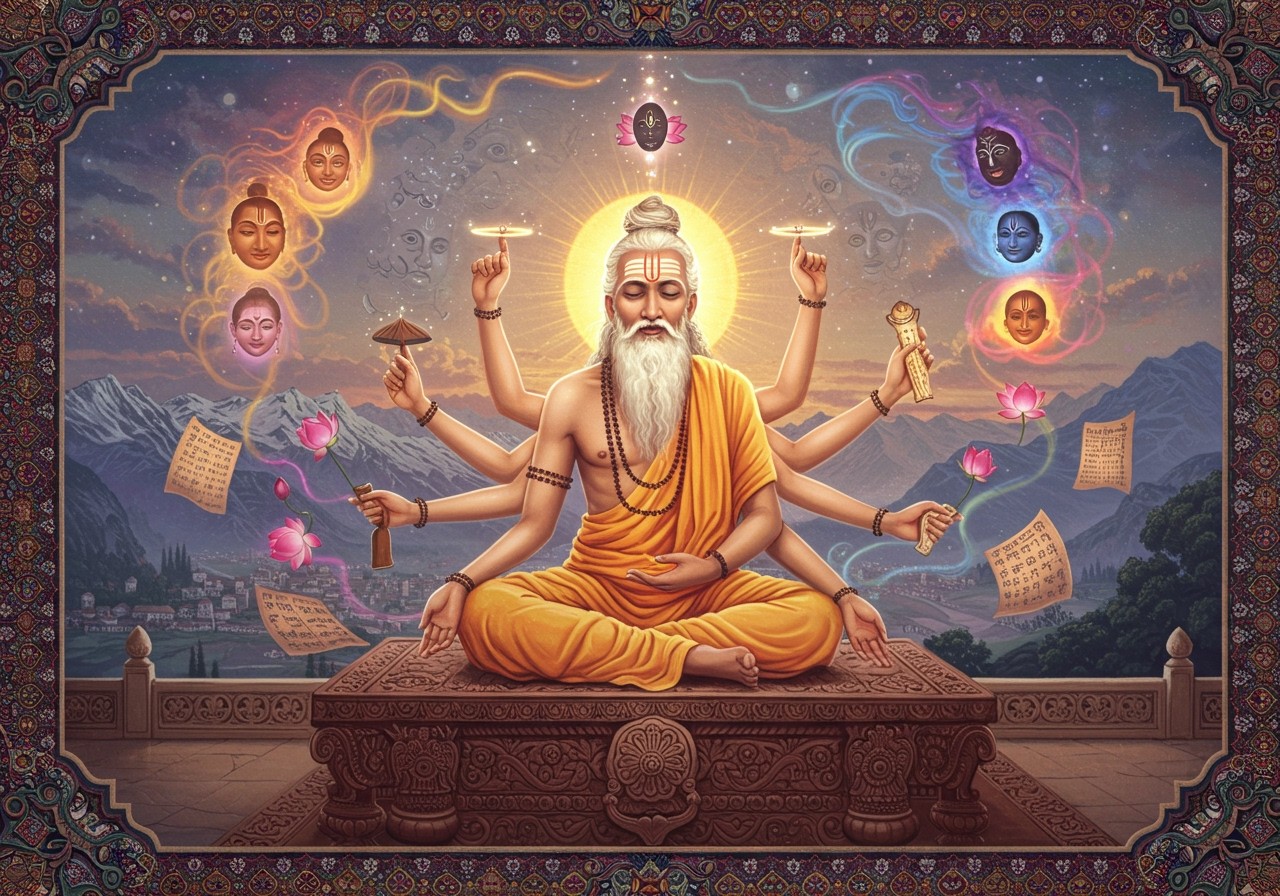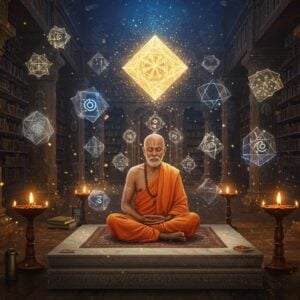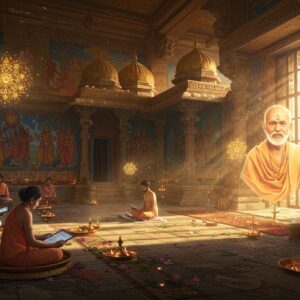Abhinavagupta: A Luminary of Indian Aesthetics and Philosophy

Abhinavagupta (c. 950–1016 CE), a Kashmiri philosopher, mystic, and aesthetician, profoundly shaped Indian culture. His enduring legacy rests primarily on his illuminating commentary on Bharata Muni’s Natya Shastra, known as Abhinavabharati. This work, along with others like Tantraloka, reveals his deep insights into the nature of art, consciousness, and spiritual experience. His profound influence continues to resonate in contemporary Indian art and thought.
Abhinavagupta’s Philosophical Foundation
Kashmir Shaivism and Pratyabhijna
Abhinavagupta’s philosophical roots lie in the non-dualistic tradition of Kashmir Shaivism. A core tenet of this tradition is Pratyabhijna, the recognition of one’s true self as Shiva, the ultimate consciousness. This concept permeates his work, providing a holistic framework that integrates metaphysics and soteriology, offering a complete vision of reality. He viewed the universe not as separate from the divine, but as a manifestation of it.
The Trika System and Spanda
The Trika system, a central element of Kashmir Shaivism, plays a crucial role in Abhinavagupta’s philosophy. It emphasizes the triadic interplay of Shiva (the ultimate reality), Shakti (divine energy), and the individual soul (Anu). Within this system, the concept of Spanda emerges as a dynamic principle, representing the pulsating, vibrant nature of consciousness that animates all of existence. This dynamism underscores the interconnectedness and ever-changing nature of reality.
Abhinavagupta’s Aesthetics: A Bridge to the Divine
Rasa: The Heart of Aesthetic Experience
Abhinavagupta significantly expanded the Rasa theory, exploring the emotional essence of art. He delved into Rasasvada, the aesthetic experience that transcends ordinary awareness and leads to a state of bliss. Building upon Bharata Muni’s Natya Shastra, he viewed drama and poetry not merely as forms of entertainment, but as powerful pathways to spiritual awakening. He believed that through engaging with art, individuals could access deeper levels of consciousness and experience a profound connection with the divine.
Dhvani: The Resonance of Suggestion
Dhvani, a key concept in Abhinavagupta’s aesthetics, emphasizes the suggestive power of language and art. He saw language not just as a tool for communication, but as a conduit to deeper meaning and emotional resonance. Through Dhvani, art evokes emotions and insights that transcend the literal, offering glimpses into the divine consciousness that permeates all creation. This concept highlights the transformative potential of art to awaken the soul and expand our understanding of reality.
Abhinavagupta’s Enduring Influence on Indian Aesthetics
A Legacy of Integration and Inspiration
Abhinavagupta’s contributions were pivotal in systematizing Indian aesthetic theory. He seamlessly integrated emotion, art, and spirituality, creating a holistic framework that continues to influence artists and thinkers today. His ideas bridge ancient wisdom with modern creative expression, demonstrating the transformative power of art for both personal and spiritual growth. His legacy inspires us to explore the deeper dimensions of art and its capacity to connect us with the divine.
Want to delve deeper into the world of sacred rituals and spiritual practices? Explore a wide range of products related to puja, meditation, and more at poojn.in, India’s leading online store for cultural goods and services.
Looking for authentic puja items to enhance your spiritual practice? Discover exquisite Shiva Murtis and other sacred items at poojn.in.
Deepen your understanding of ancient texts and traditions. Explore our guide to Somnath Temple rituals and discover the rich cultural heritage of India.


